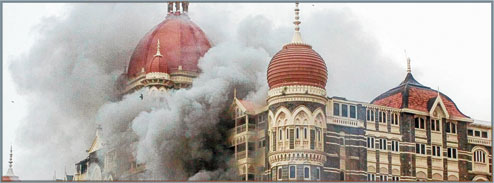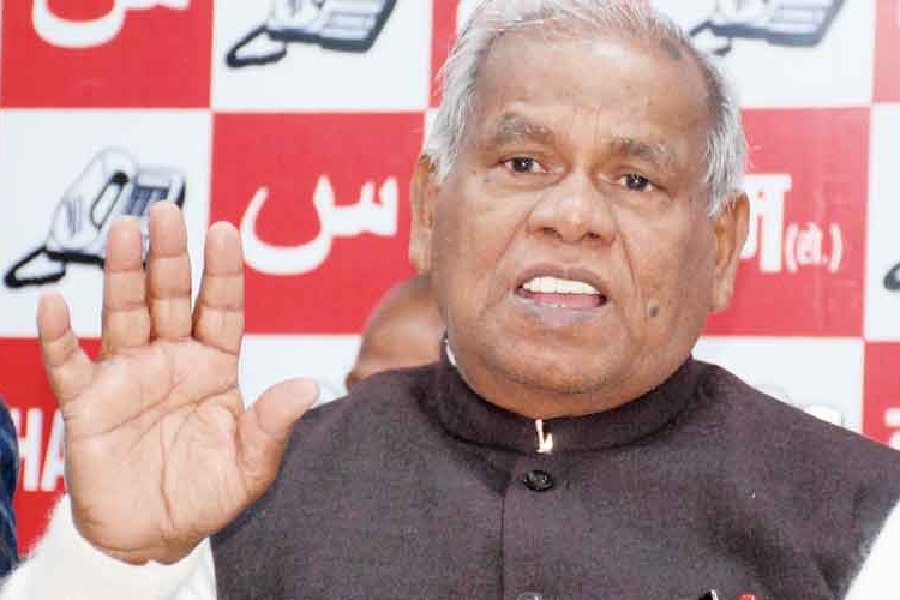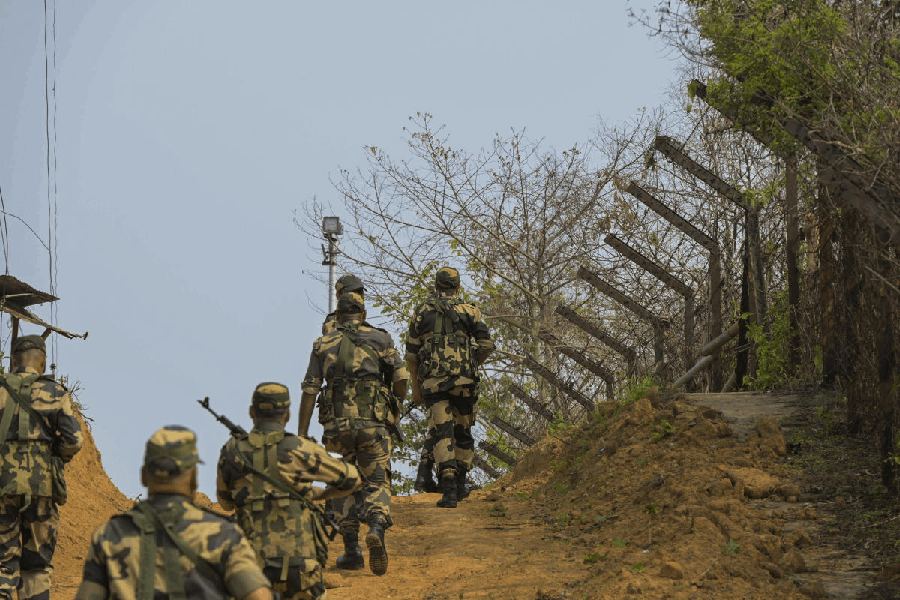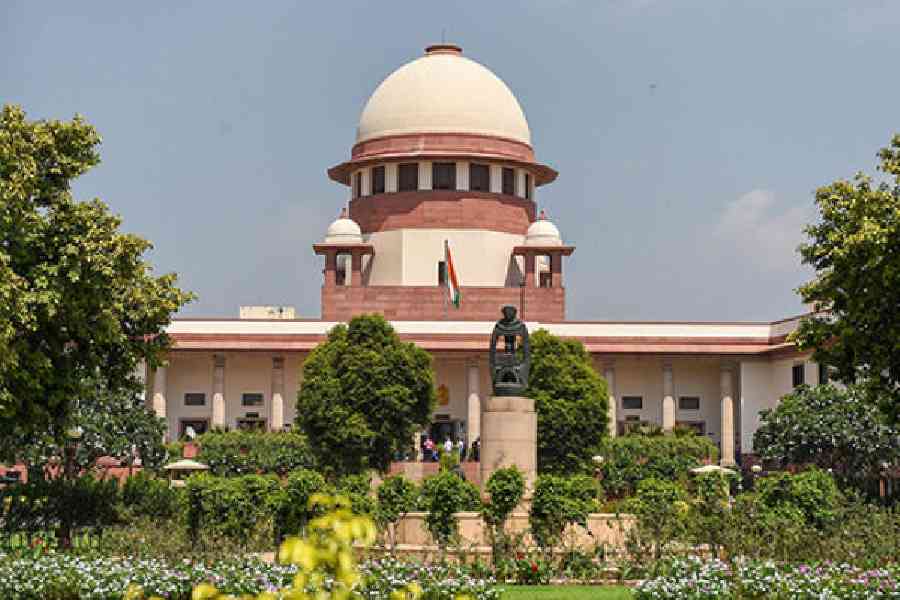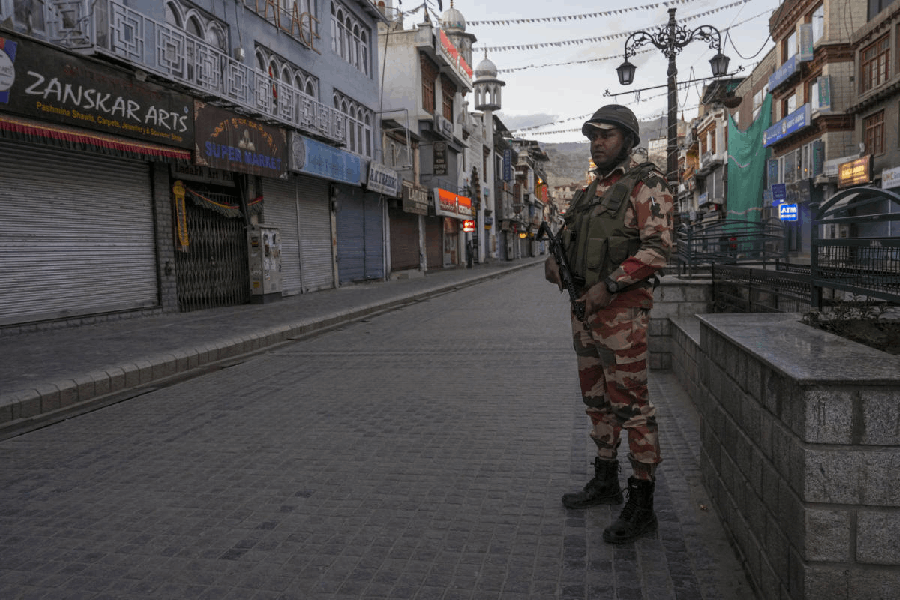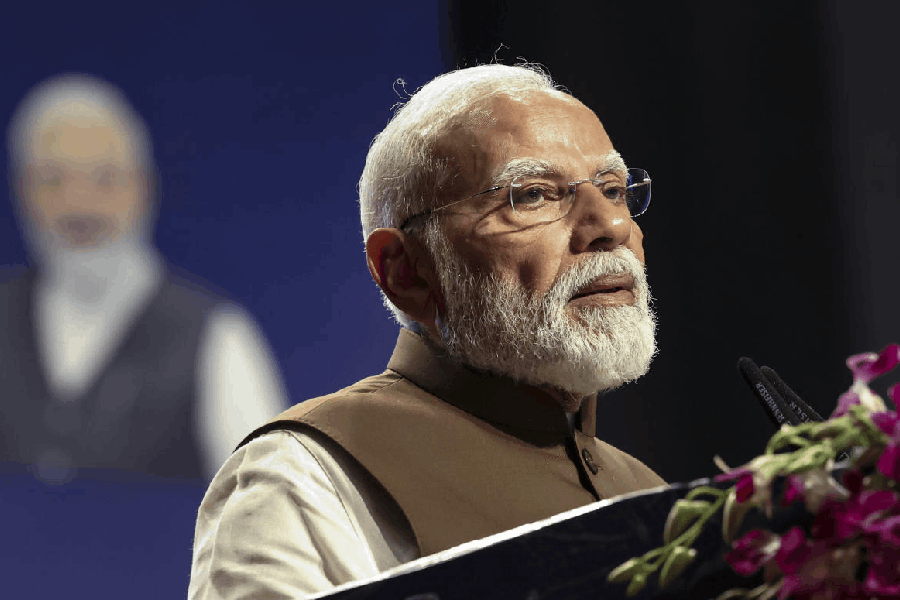
in 2008

Mumbai, Feb. 8: The 10 Lashkar-e-Toiba terrorists, who launched the Mumbai attacks on the night of November 26, 2008, killed 165 people and changed the face of urban terrorism, had tried to carry out similar attacks on the city twice earlier that year.
The chilling detail was revealed by David Coleman Headley on the first day of his deposition before a Mumbai court this morning.
Headley is a Pakistan-origin American agent who went rogue, became a Lashkar-e-Toiba operative and conducted surveillance for the Mumbai attacks.
Cocky and condescending, Headley deposed at the city sessions court over video from the US, where he is serving a 35-year sentence in another terror case.
The biggest takeaway so far for the security establishment from the deposition, which will resume tomorrow, is that Headley has stood by a confession he had made to the National Investigation Agency (NIA) in 2010.
That confession did not have evidentiary value but today’s deposition has because it is being done in a court, arming the Indian government with a substantive element to demand the handover of the masterminds based in Pakistan.
Headley confirmed that Lashkar-e-Toiba chief Hafiz Saeed and commander Zakiur Rehman Lakhvi plotted the attacks with the active participation of officers of the Pakistan spy agency, ISI, and trained the terrorists.
During the five-and-a-half-hour deposition, Headley identified pictures of his co-conspirators, spoke about his personal life and gave details of his two-year training. Indian officials are now working on a fresh dossier that will be sent to Pakistan.
For the common man, the disclosure that two 26/11-style attempts were made on Mumbai earlier is no less significant. The suggestion that at least one of the attempts failed only because of providence served to underscore how vulnerable India’s financial capital was eight years ago.
The first attempt was made by the 10 terrorists —nine were killed in the 26/11 attacks and the tenth, Mohammed Ajmal Kasab, was hanged — in September 2008.
It failed because the boat hit rocks in the “ocean”. The people on the boat were saved as they were wearing life jackets. The weapons and explosives were lost, according to Headley’s deposition. “Lashkar operative Sajid Mir (Headley’s handler) told me that two earlier attempts to attack Mumbai had failed,” Headley told the court.
.jpg)
“The same band of 10 LeT-trained Pakistani men who attacked Mumbai in November 2008 had made two more attempts before this. First was in September 2008 — it was aborted after their boat hit rocks near Karachi. The boat disintegrated and people on it had their life jackets on and they came to the shore, while the second attempt was made a month later (in October),” he said.
“They were successful in November, finally,” Headley added.
Headley did not explain how the second attack failed. Neither did he list the specific dates on which the terrorists made the first two attempts.
Indian intelligence agencies had spoken about earlier attempts but the deposition by Headley is the first corroboration from the other side.
Headley also recounted the ease with which he managed to enter India eight times — not five as some intelligence officials had earlier speculated — on the strength of his American name. The false information he had provided in his visa application failed to raise red flags.
So confident was Headley that he visited India even after the Mumbai attacks. For his eighth visit, he chose Delhi to stake out the National Defence College for a possible attack.
The first deposition by a foreign-origin terrorist generated considerable excitement before the day’s proceedings began at Judge G.A. Sanap’s court in the morning.
Podgy in a dull-grey cardigan, Headley, 55, initially looked listless and disinterested as he sat surrounded by US officials and a lawyer around an oval, yellow table in a small room. It was 7am in India and around 8.30pm at Headley’s end.
As the deposition went on, Headley became animated. He spelt out the role of Lashkar leaders like Saeed and Lakhvi, who trained him, and also named his ISI handlers.
Sarcasm never left Headley who mimicked the accent of a legal officer — “Tell me, Mr Headleeey” — giggling when an official got stuck while reading from a statement and picking loopholes in India’s visa mechanism.
“All details except the place of birth, date of birth, mother’s nationality and passport number were incorrect in my visa application. I gave incorrect information for visa to consulate general of India in Chicago to protect my cover. Everything about me was incorrect,” he sneered, asked how he managed to get himself a “business visa” from India for five years.
Headley’s counsel in the Mumbai court was senior lawyer Mahesh Jethmalani.
Headley’s disdain was often targeted at Ujjwal Nikam, the special public prosecutor.
Asked by Nikam if he or his trainers handled sophisticated weapons during his indoctrination and military training, Headley said: “They were AK-47s, if that is your idea of a sophisticated weapon.”
Later, when his submissions during the deposition were being read out by a court official as part of the Indian judicial procedure, Headley chatted with US officials and lawyers present with him.
The judge firmly called his attention and instructed the legal officer: “Carry on reading, don’t look at him.”
“A little over-smart, wasn’t he?” Nikam later wondered aloud.

